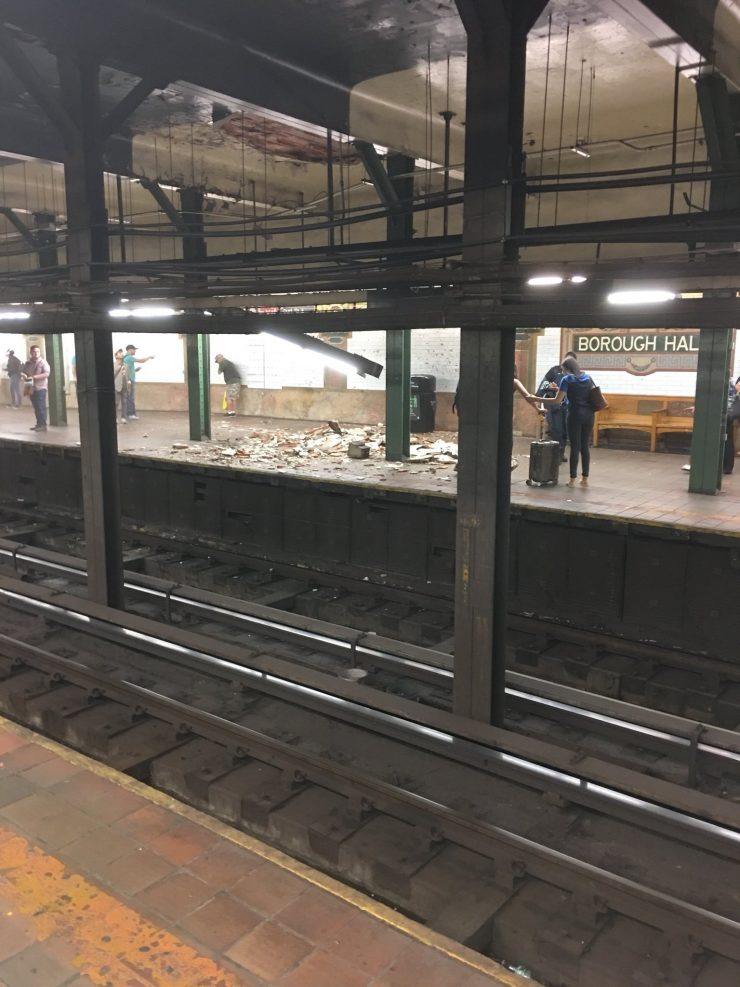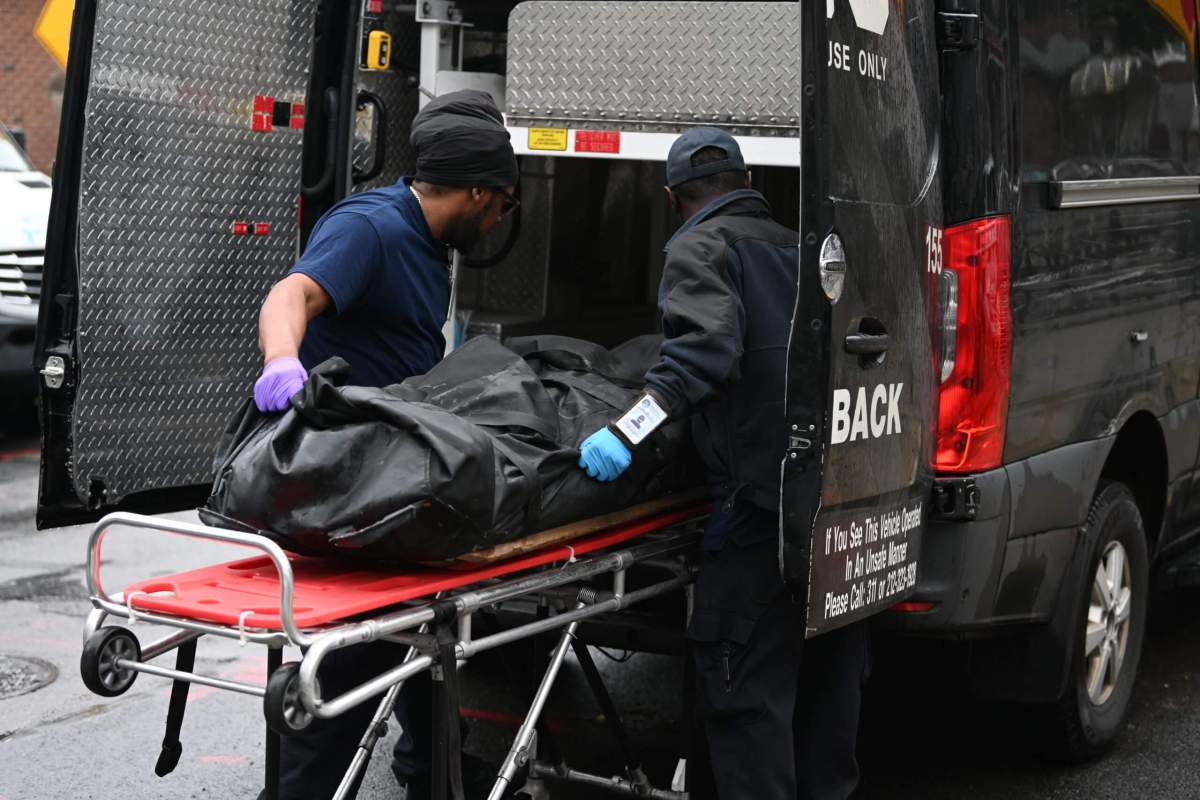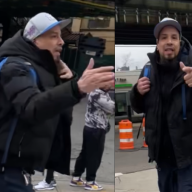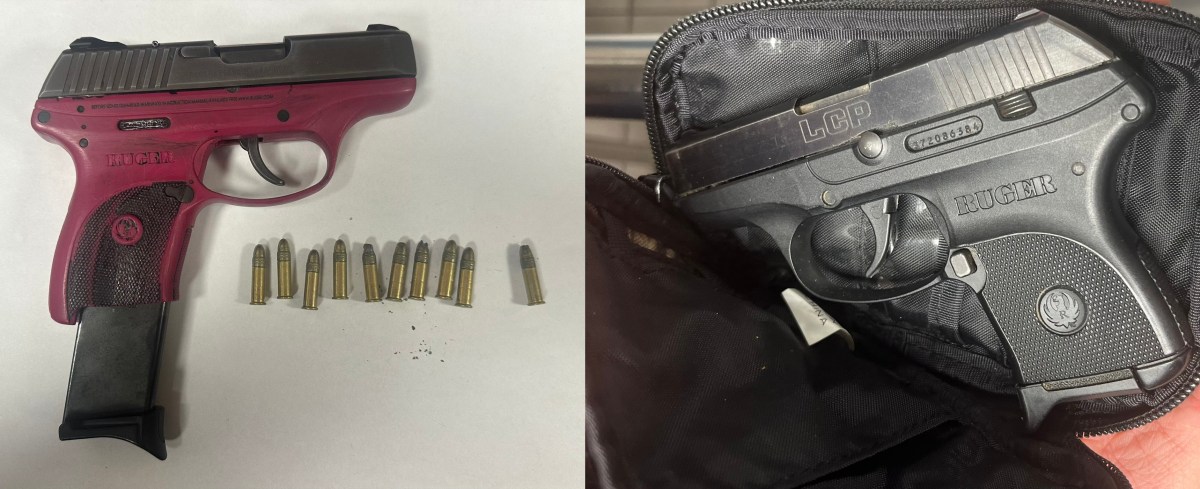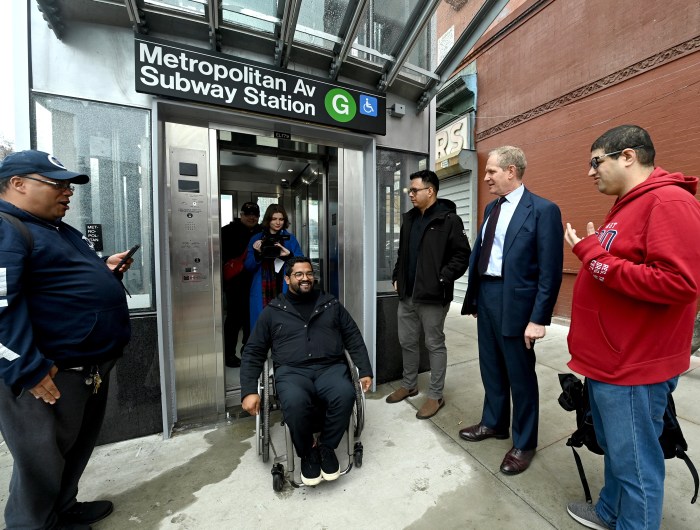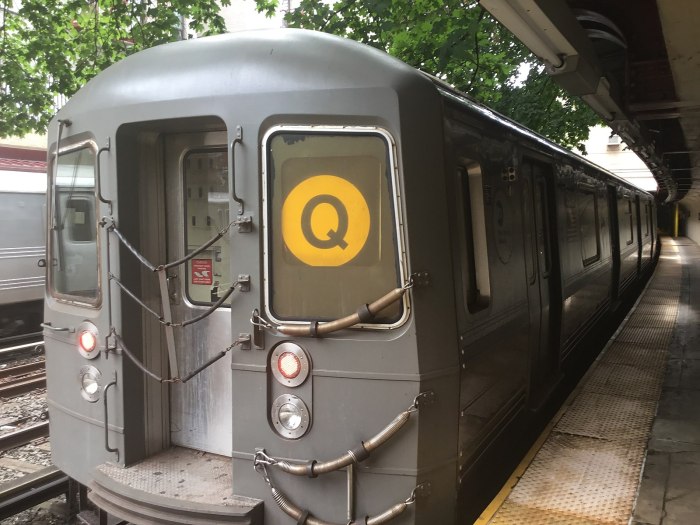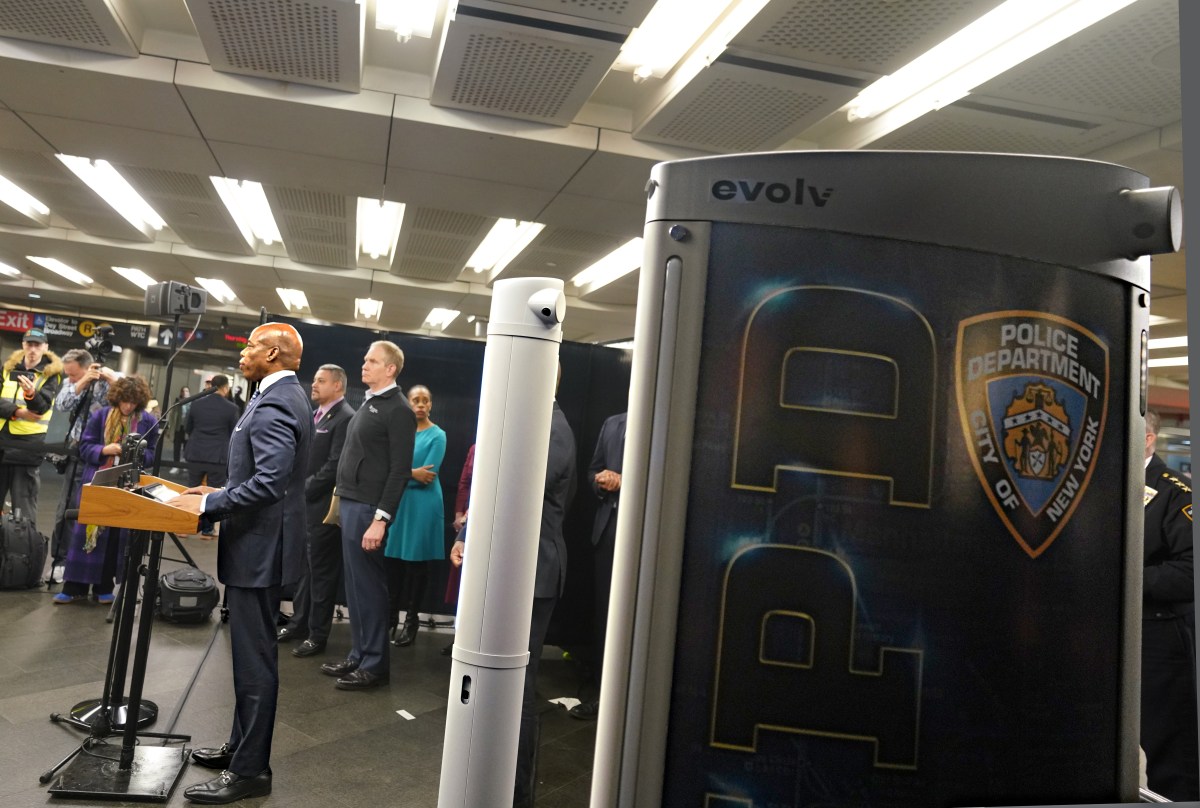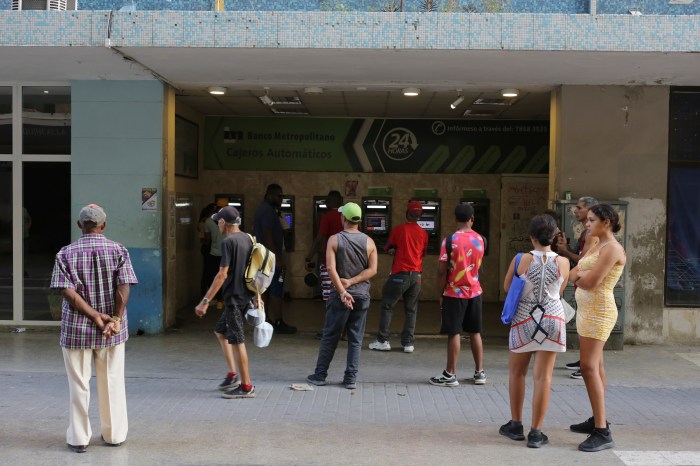Years of negligence and “serious flaws” in inspection techniques led to the high-profile, partial ceiling collapse in the Brooklyn Borough Hall station last year, according to a new audit.
The report issued Tuesday from the MTA’s inspector general found that the transit authority had identified the defects that led to the collapse two years earlier, in 2016. But inspectors failed to grasp the seriousness of the degradation because of a lack of expertise in inspecting the decorative terra cotta tiles adorning the century-old station.
But the MTA had also been aware for nearly a decade that it didn’t have the proper knowledge to assess those more uncommon subway fixtures; the inspector general released two previous audits on the matter—once in 2010 and again in 2012—following a similar collapse of brick ceiling of the 181st Street station in Washington Heights.
“It is extremely fortunate that no one was seriously injured in the Borough Hall ceiling collapse last June,” said MTA Inspector General Carolyn Pokorny in a statement. “Had the recommendations issued in our 2010 report been fully implemented, it is likely that the extensive station damage and costly repairs could have been reduced, if not prevented.”
Pokorny’s office found the MTA inspectors falsely determined that immediate repairs were not required at the Borough Hall station—despite repeatedly noting its deteriorating ceiling.
The incompetence and negligence led the MTA to spend an “exorbitant” $8.3 million in a likely unnecessary emergency repair involving the installation of a temporary protective shield over the platform and tracks, according to the OIG. One commuter suffered a minor injury and refused medical attention, the MTA and FDNY reported at the time.
The inspections are the responsibility of the MTA’s “Maintenance Of Way” (MOW) engineers. Pokorny’s office has recommended that the MTA train those inspectors to identify and document unusual construction and materials during their work; that those workers should be required to disclose when they can’t assess materials and seek outside consultants when necessary, among other proposals.
Pokorny’s office said the IG had urged the MTA to seek outside consultants for unusual construction materials in its 2010 report, but the authority has been reluctant to do so. Terra cotta work is present in 13 of the MTA’s 472 stations, according to the IG.
The MTA in its response agreed with the recommendations. It said it has begun working to institute special procedures for inspecting special features and new internal audits will take place each quarter to make sure those procedures are being followed.
“For years the MTA has been using outside consultants to perform special structural inspections and surveys, in addition to NYC Transit inspections that occur annually,” said MTA spokesman Tim inton in a statement. “When the century-old Borough Hall station ceiling proved defective, engineers assessed the materials involved, shielding the structure, until a full rehabilitation could begin as part of the new capital plan.”


